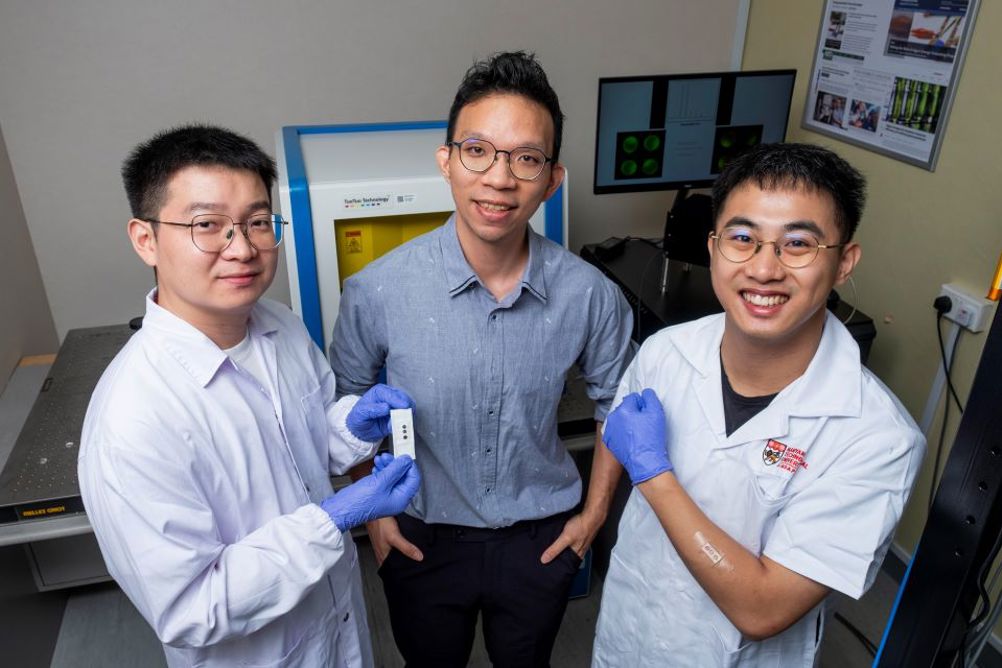This is the claim of scientists at Nanyang Technological University, Singapore (NTU Singapore) whose new technology measures biomarkers that can indicate health or disease through sweat.
Human sweat contains biomarkers such as glucose, lactate and urea that indicate various health conditions and can be collected in a non-invasive and painless manner, making it suitable for daily monitoring, said the NTU researchers at the School of Electrical and Electronic Engineering (EEE).
People living with diabetes can use an invasive finger prick test to self-monitor blood glucose levels. Patients prick their fingers to collect a small drop of blood on a strip before inserting it into a portable glucose meter for a reading. Alternative sensor-based monitoring devices are expensive, rigid and must be attached to the patient’s skin over prolonged periods.
By encapsulating a microlaser in liquid crystal droplets and embedding the liquid within a soft hydrogel film, the NTU team created a compact and flexible light-based sensing device that provides highly accurate biomarker readings within minutes.

In a statement, Nanyang Assistant Professor Chen Yu-Cheng at the School of EEE and Director of the Centre for Biodevices and Bioinformatics, said, “By combining a microlaser with a soft hydrogel film, we have demonstrated the feasibility of a wearable laser to provide a more pleasant health monitoring experience for patients.”
The team’s findings are detailed in Analytical Chemistry.
The NTU team created their plaster device by embedding microlasers in liquid crystal droplets. The microlasers are customised to pick up three different types of biomarkers (lactate, glucose, urea). A different coloured liquid crystal dot on the plaster distinguishes each biomarker.
When sweat interacts with the plaster, the amount of light emitted by the microlasers fluctuates based on the concentration of biomarkers present. To read the biomarker levels, users shine a light source on the plaster, and the light emitted from the microlaser sensors is analysed and translated using a mobile application.
In live experiments, the plaster picked up tiny fluctuations of glucose, lactate and urea levels in sweat down to 0.001mm, which is said to be 100 times better than current similar technology.
The NTU team believes their innovation to be the first reported wearable sensing device that can measure multiple biomarkers in sweat with ultra-high sensitivity and dynamic range. The sensitivity enables tracking of a dynamic range (low-to-high) in biomarkers levels, which provide comprehensive information on patients’ health, the team said.
The team now plans to fine-tune the microlaser sensors to detect a wider variety of substances.











McMurtry Spéirling defies gravity using fan downforce
Ground effect fans were banned from competitive motorsport from the end of the 1978 season following the introduction of Gordon Murray's Brabham...